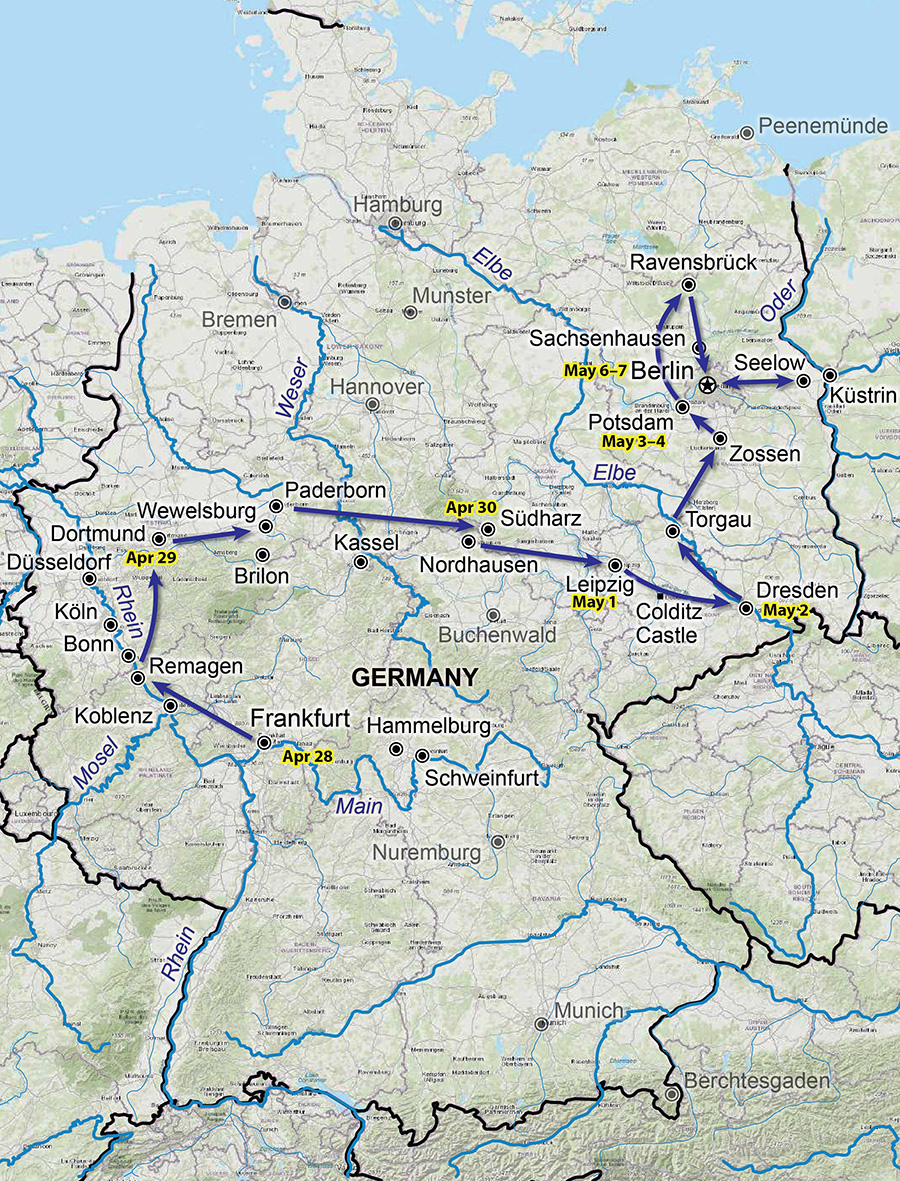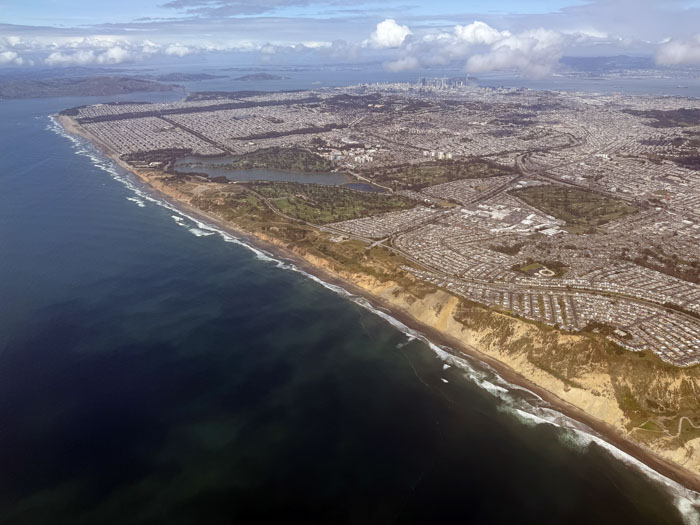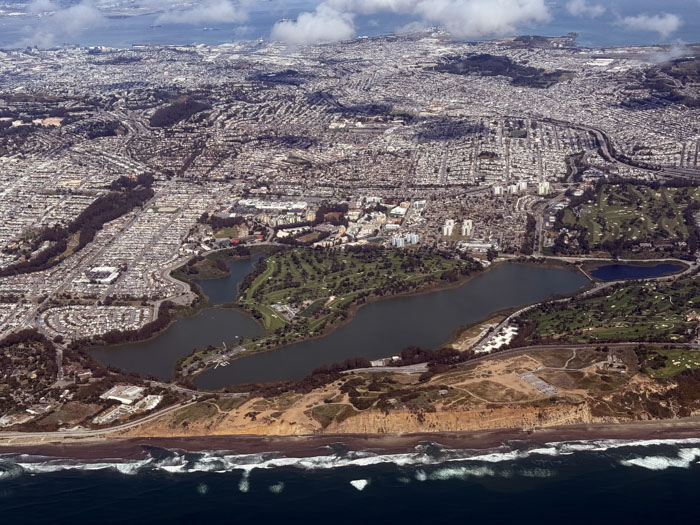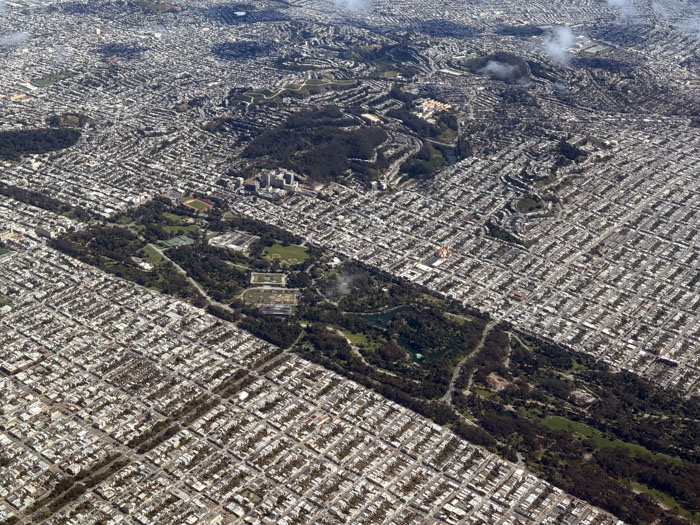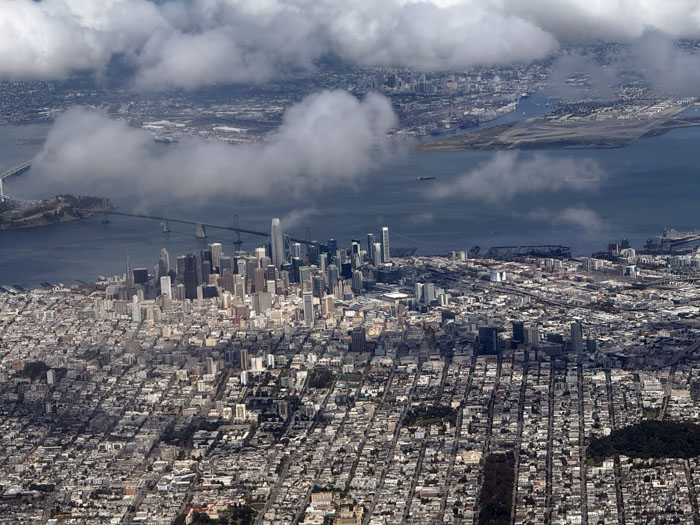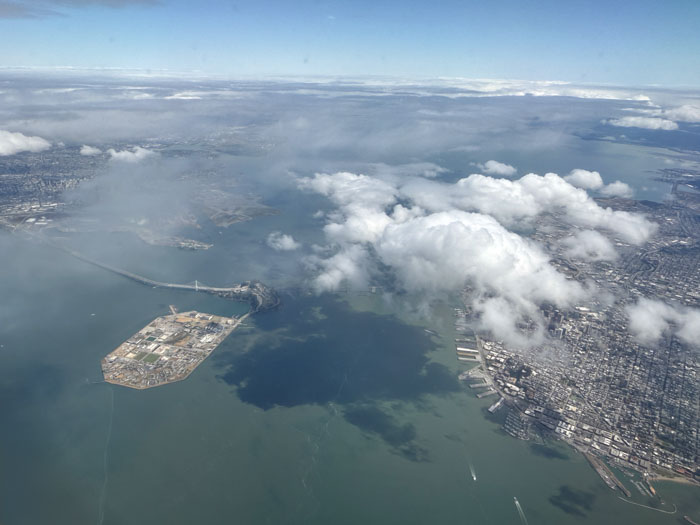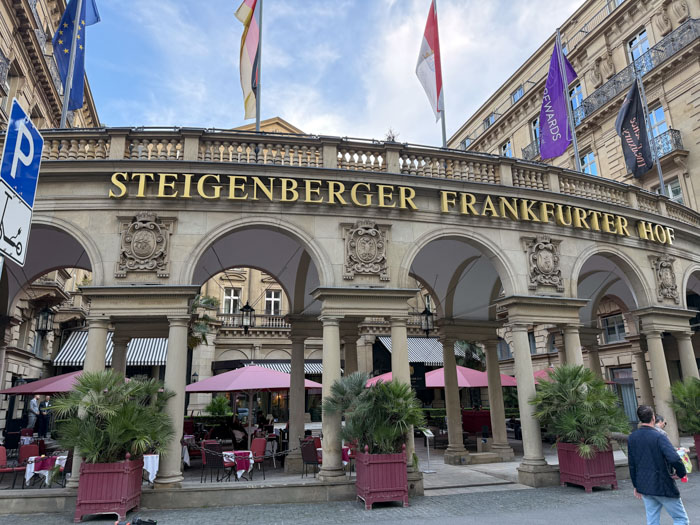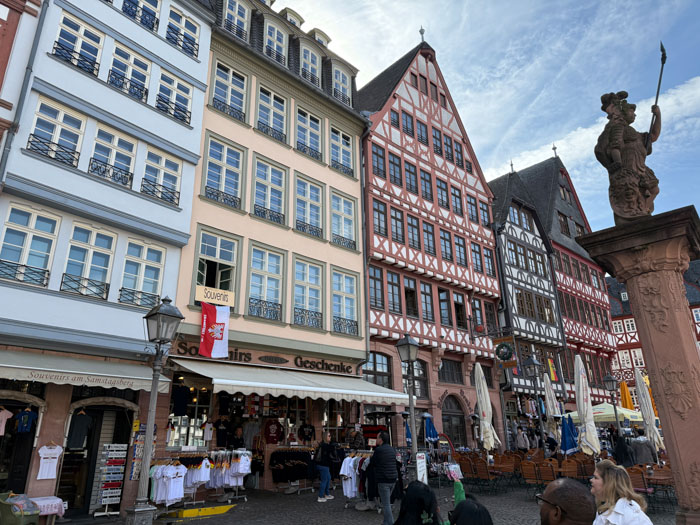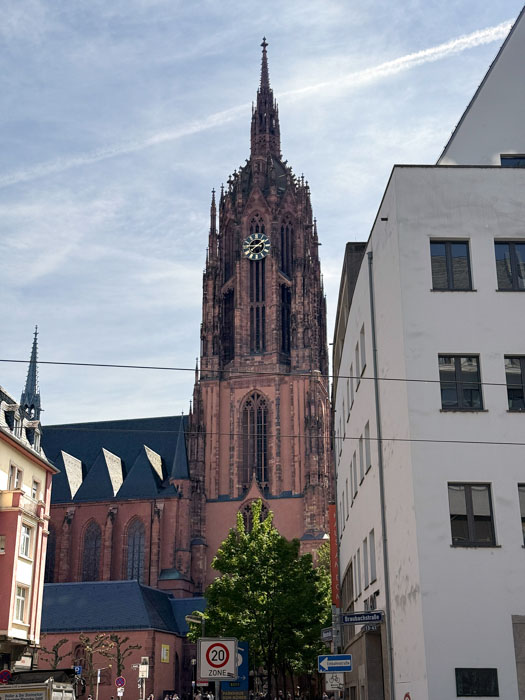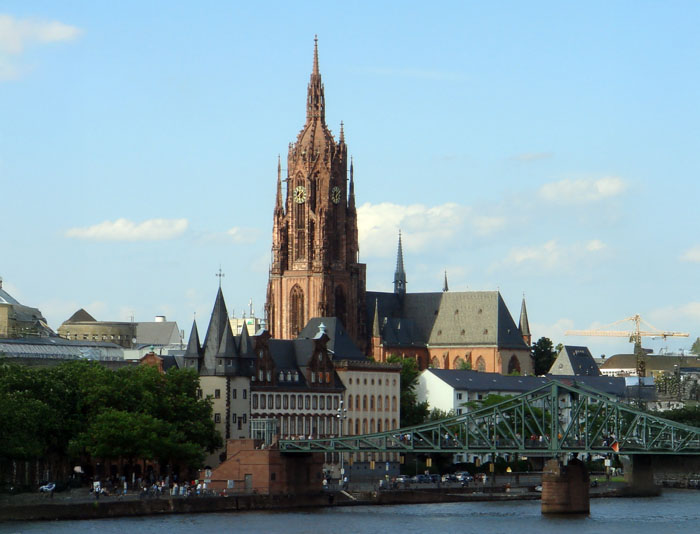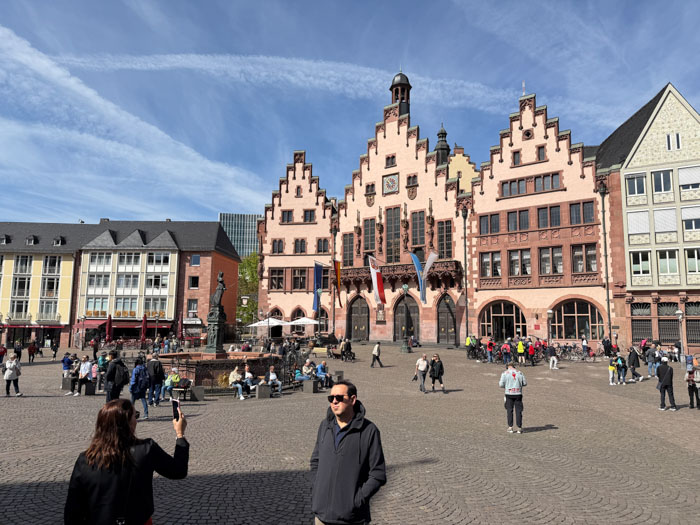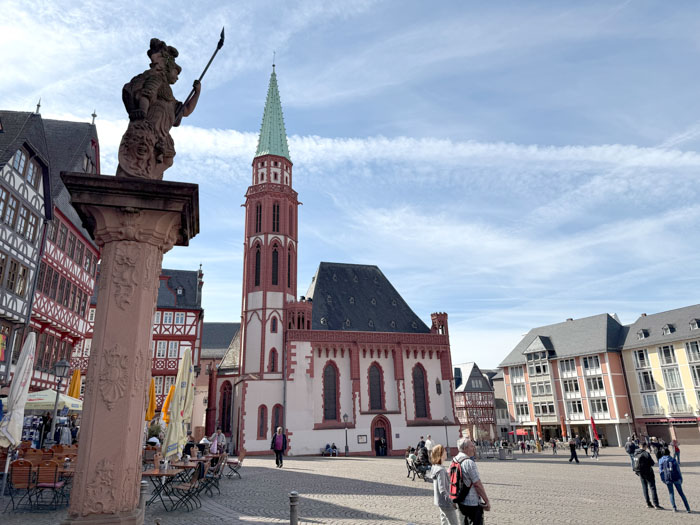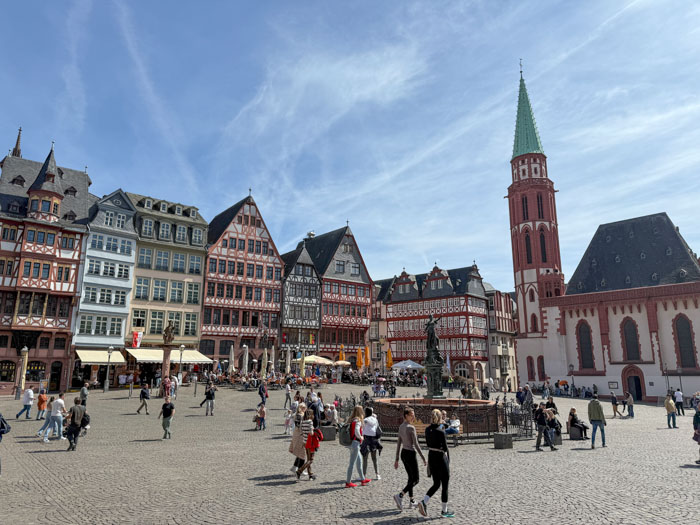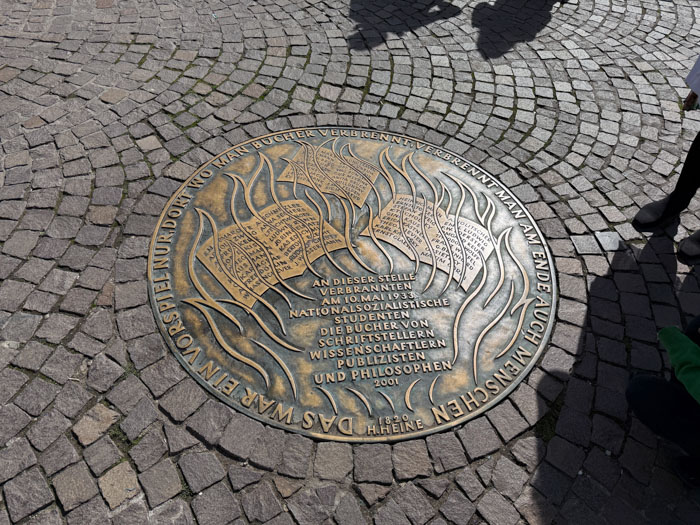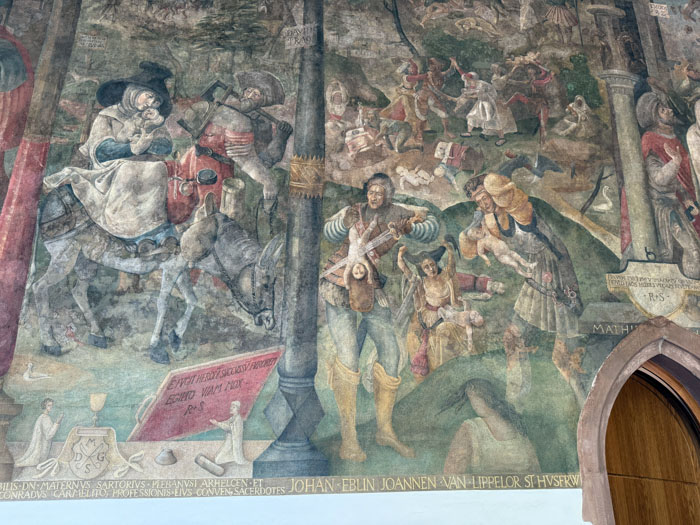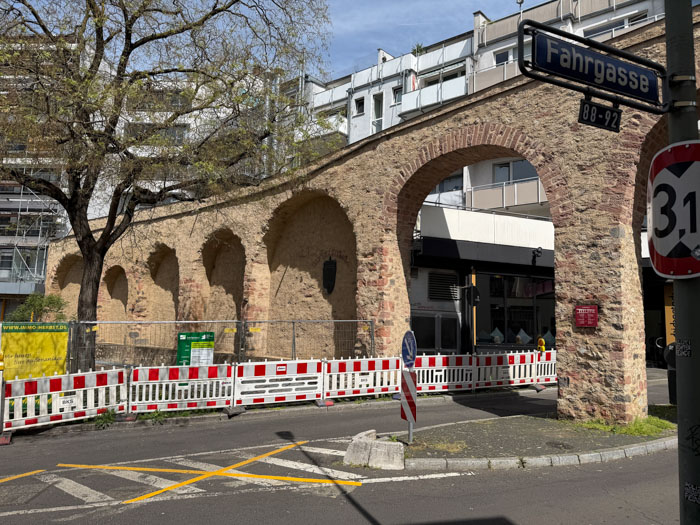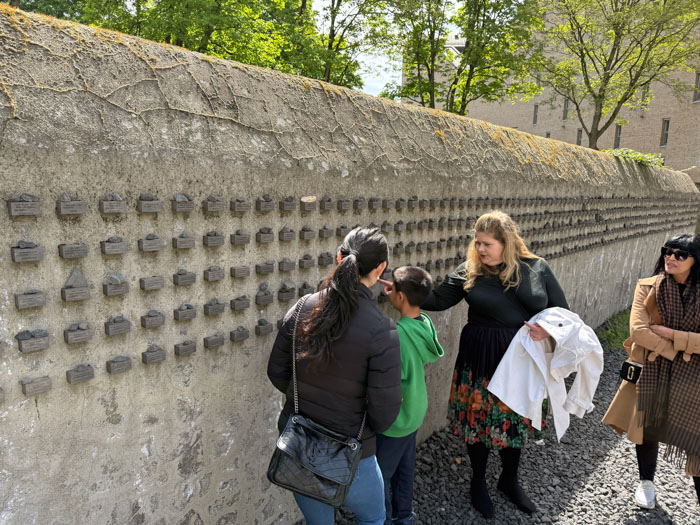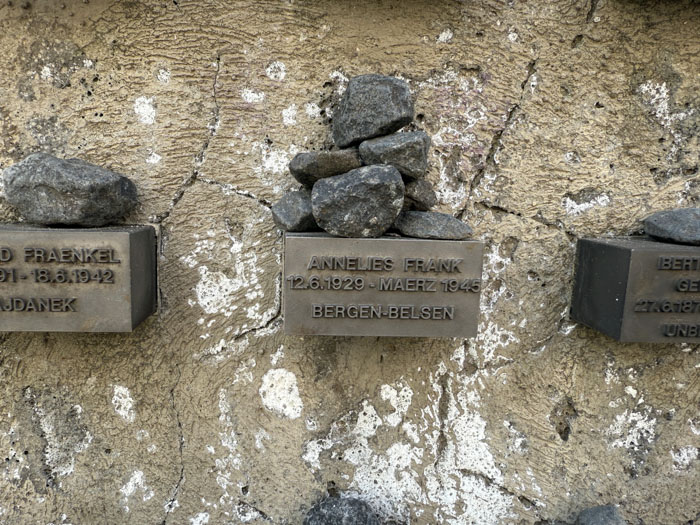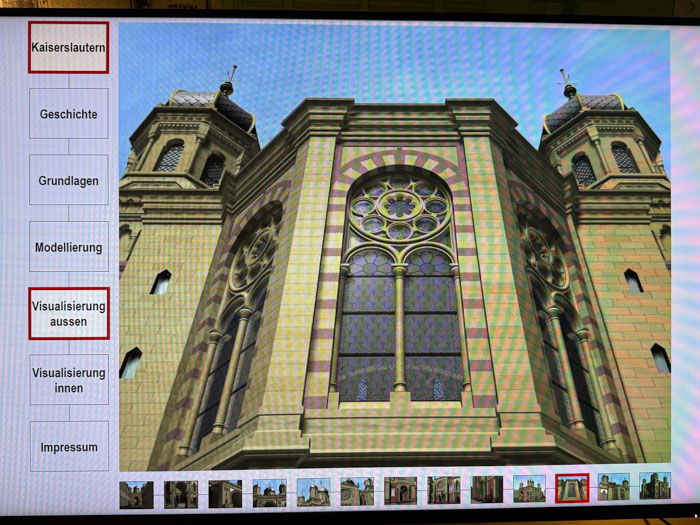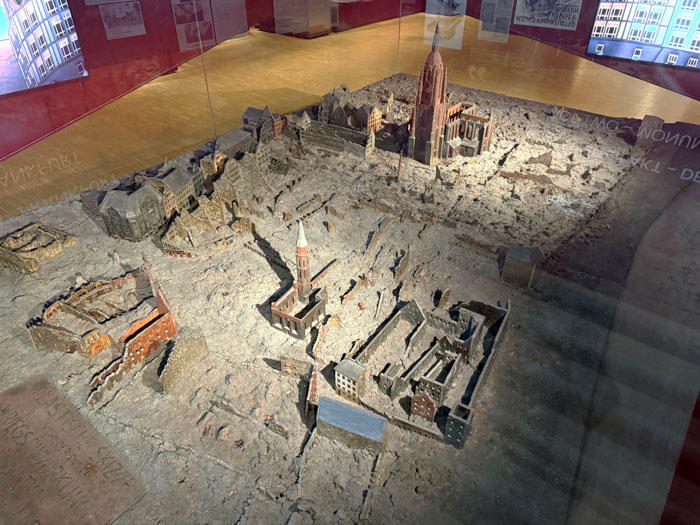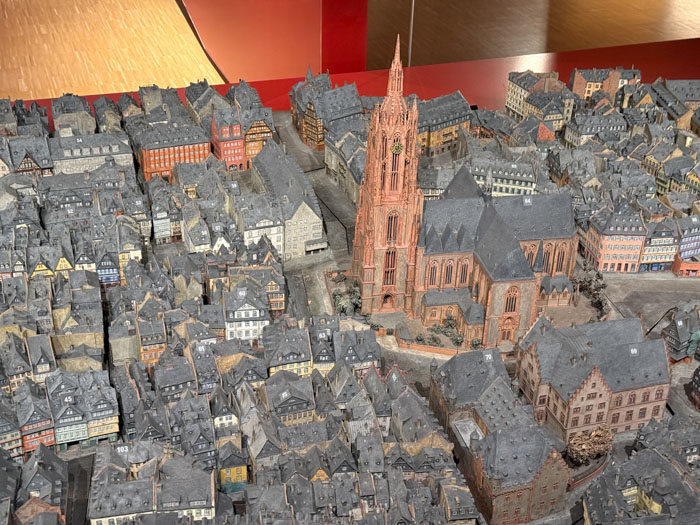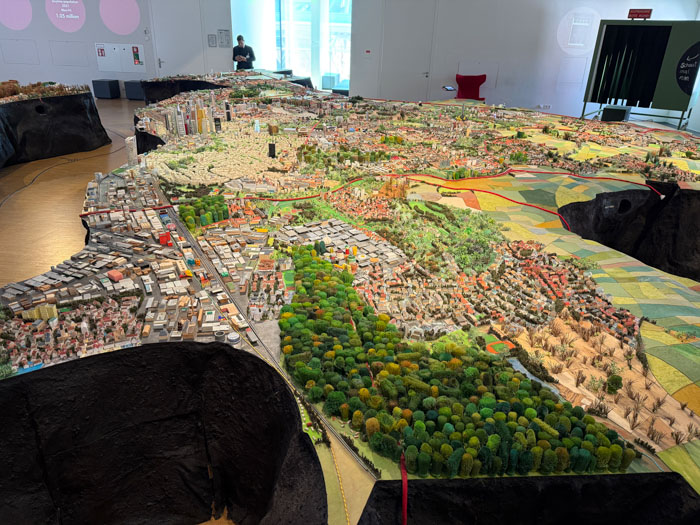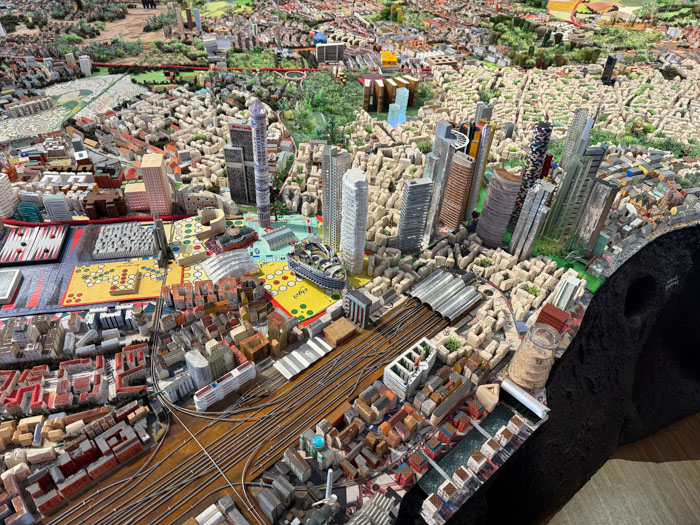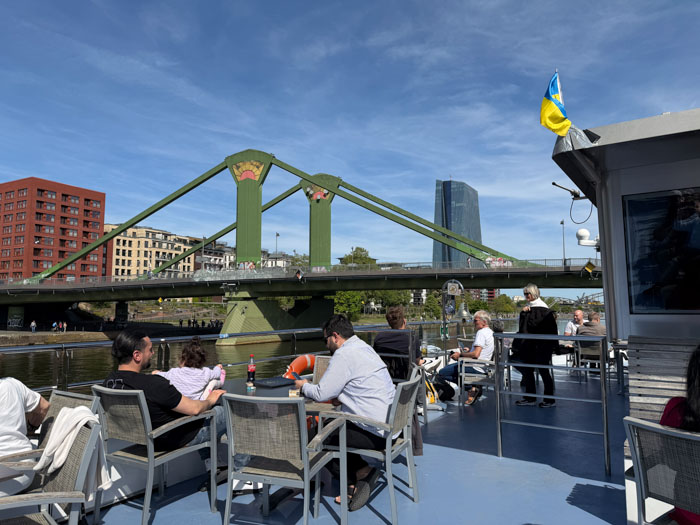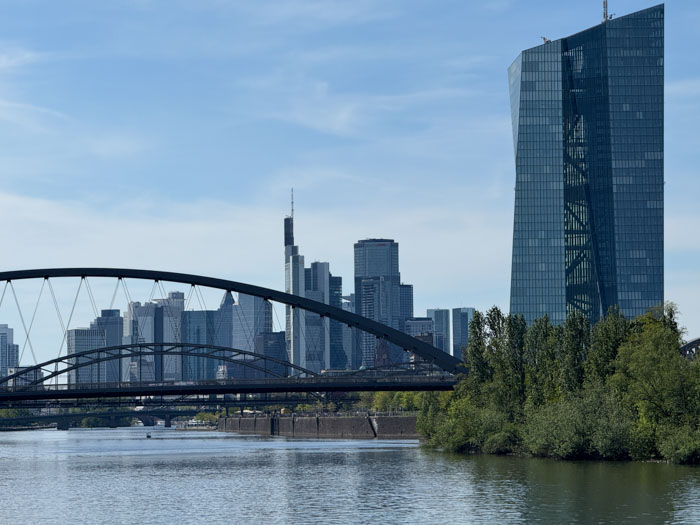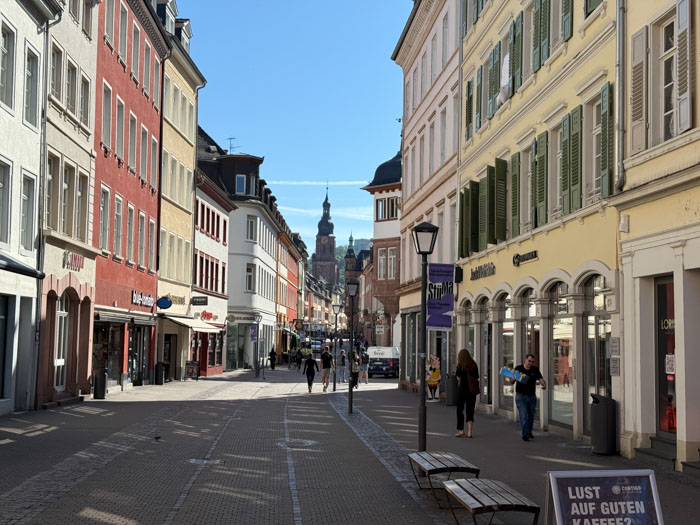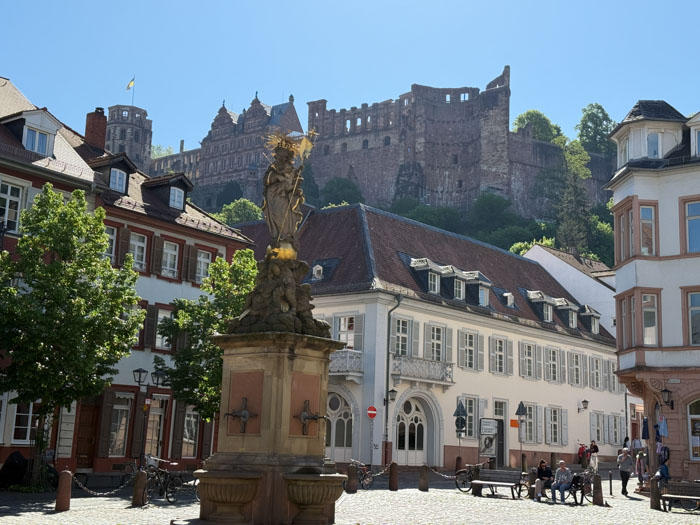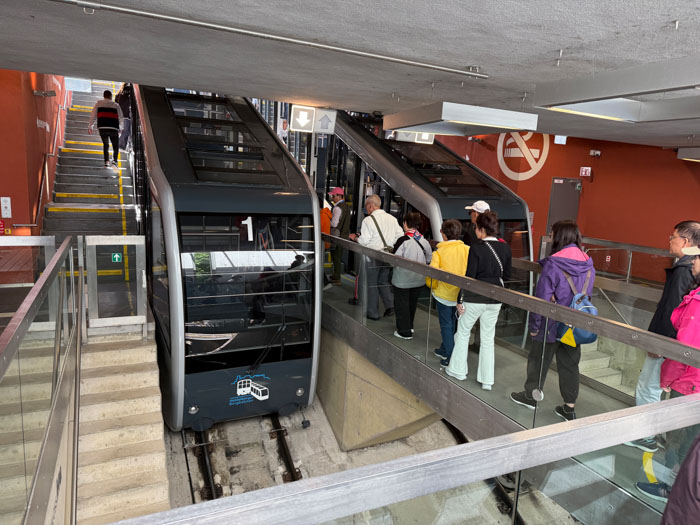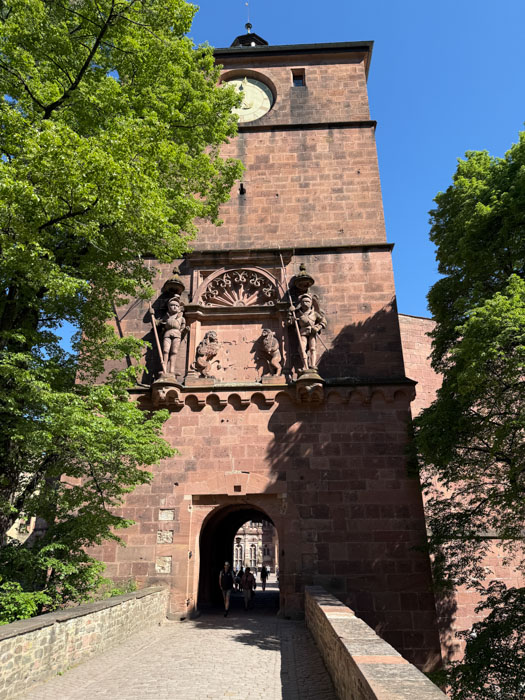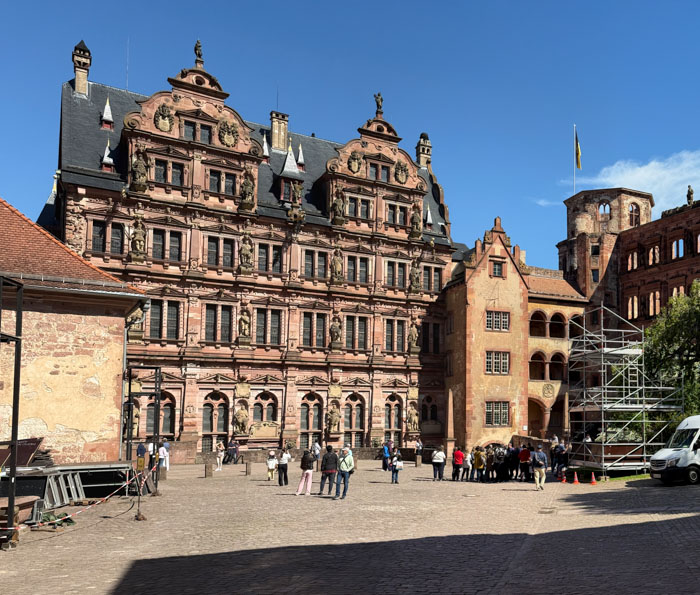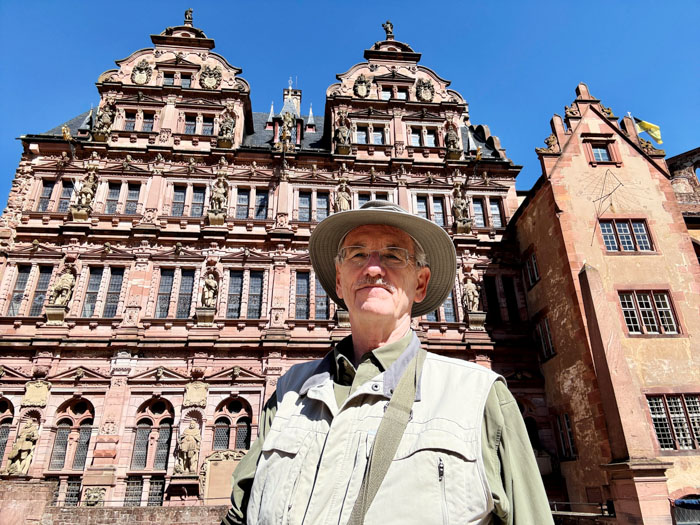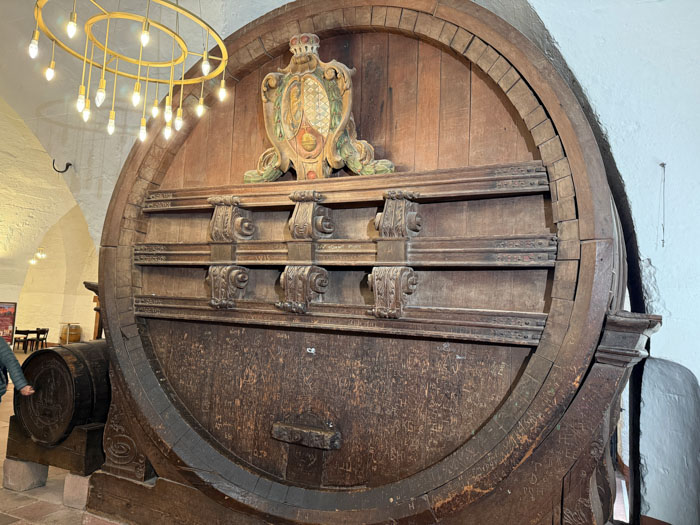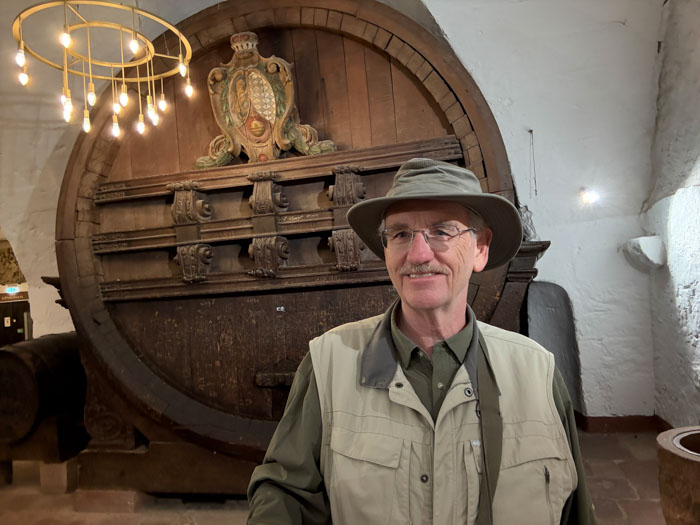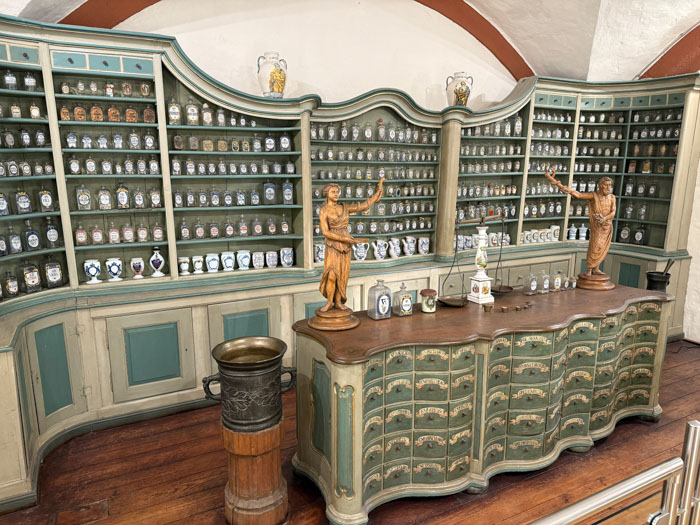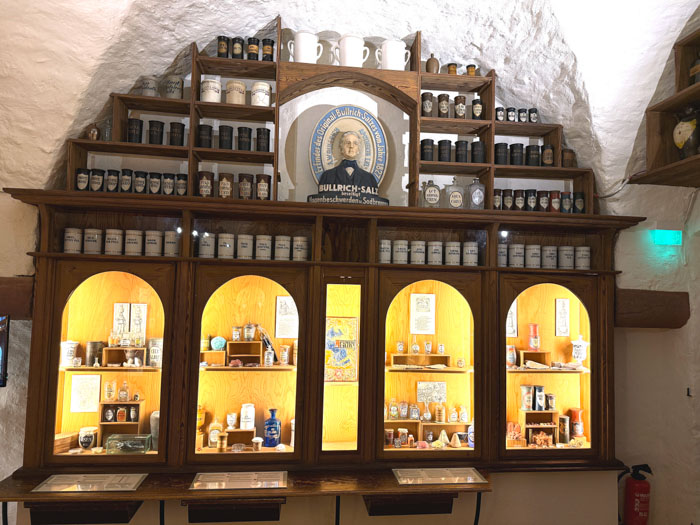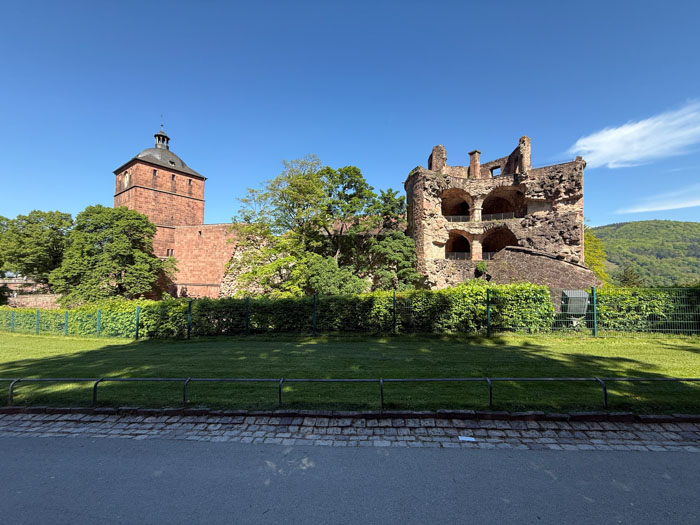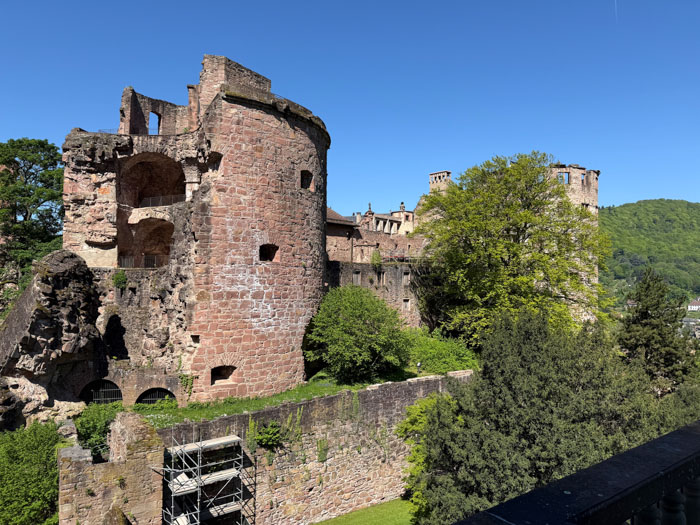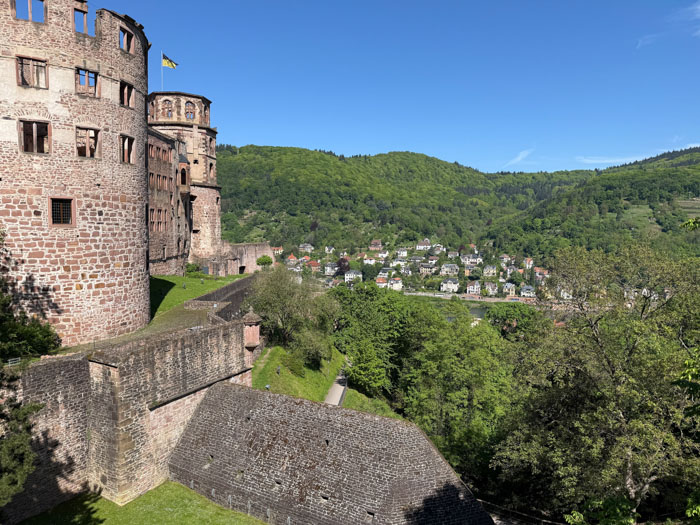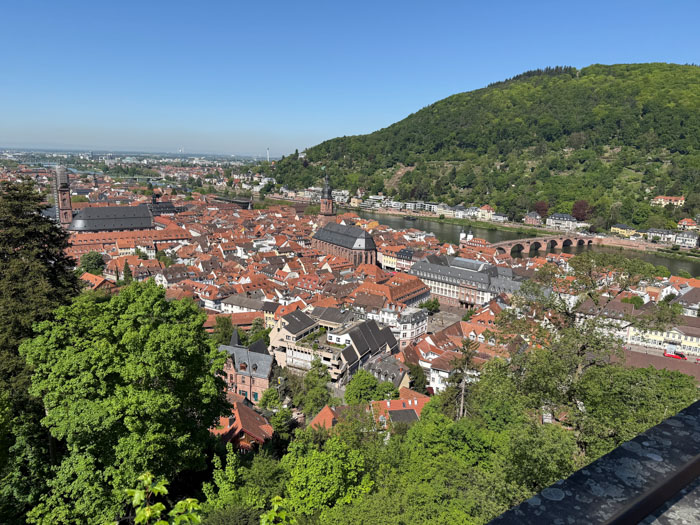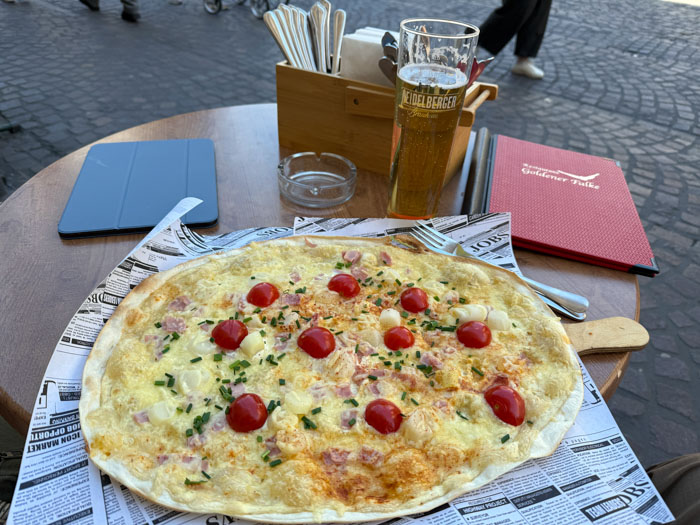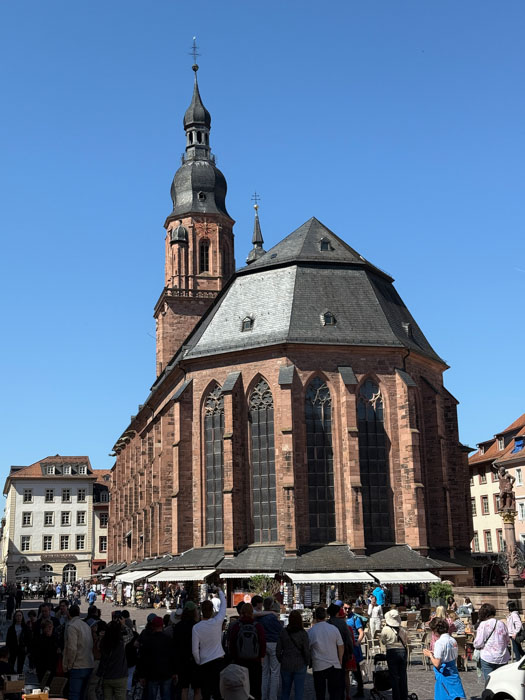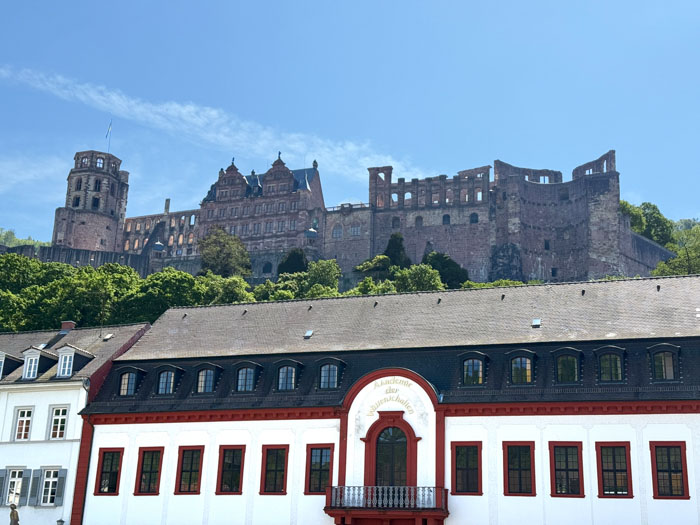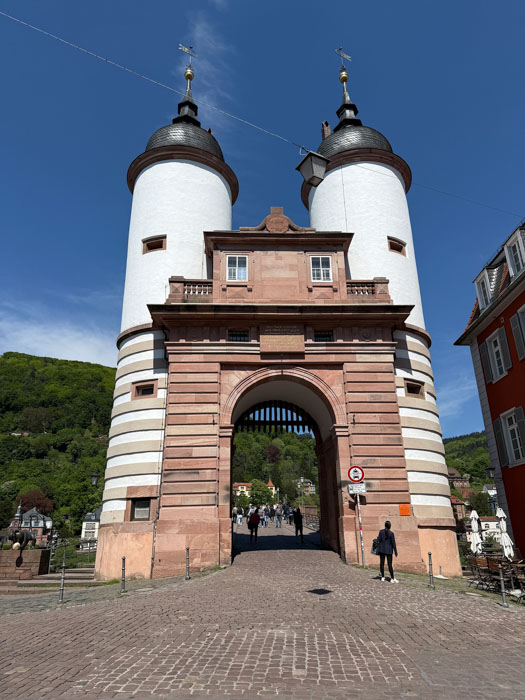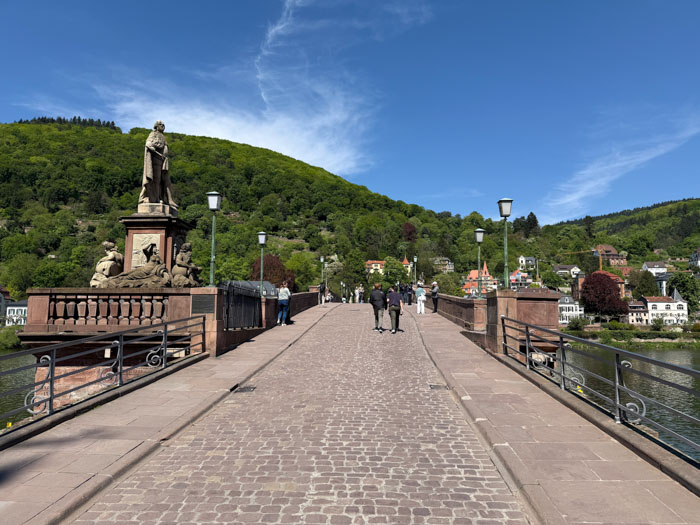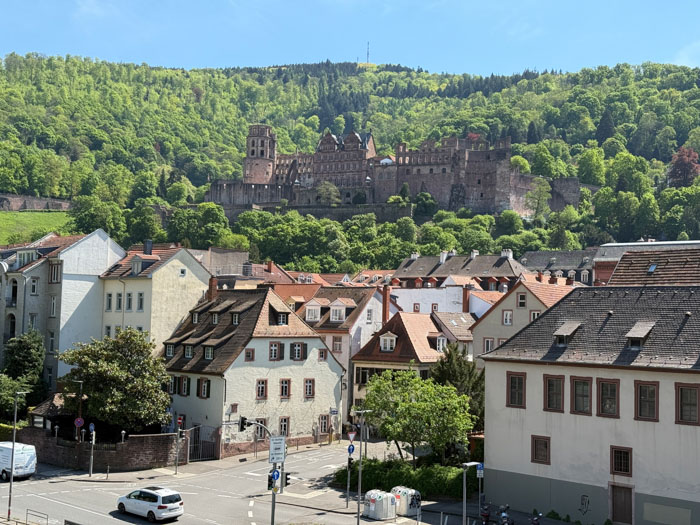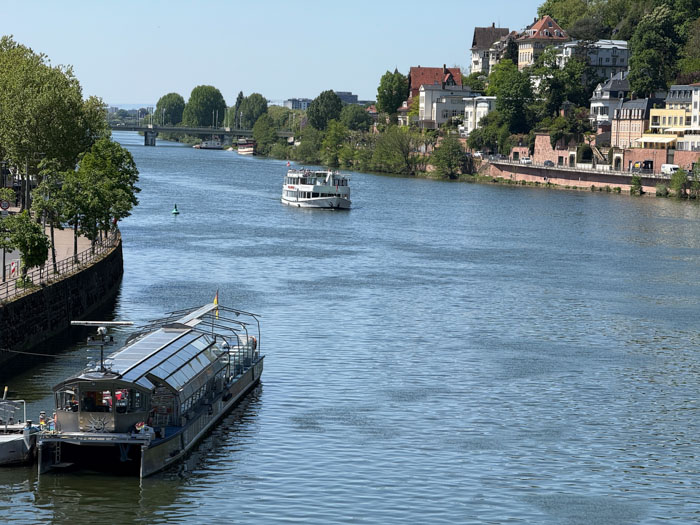Hal Jespersen's V-E Day Tour in Germany, May 2025 [Part 1]
This is my report on a trip to Germany to commemorate the end of World War II in Europe (V-E Day), hosted by Stephen Ambrose Historical Tours. This is my fifth outing with SAHT and the third led by historian Chris Anderson. The most recent one was here. Last fall I did a different tour of WWII Germany, described here, so there will be a little bit of overlap. The report is long with a lot of photos, so I have divided it into three parts:
- Part 1: Touring Frankfurt and Heidelberg before the Ambrose tour started (this page)
- Part 2: Remagen, Dortmund/Ruhr, Paderborn, Mittelbau-Dora, Leipzig, Dresden
- Part 3: Colditz, Torgau, Potsdam, Wannsee, Ravensbrück, Sachsenhausen, Küstrin, Seelow, Berlin
Friday/Saturday, April 25–26 — to Frankfurt
I flew United Airlines nonstop to Amsterdam and then Lufthansa to Frankfurt. My original plan was to go by a combination of train and car from Amsterdam to Overloon, Netherlands, to visit the well-regarded tank museum there, but this plan fell through for a variety of reasons, including high costs for cross-border one-way rental cars and some breakdown in train arrangements—a strike, maybe? So I changed to air travel and a couple of days in Frankfurt and Heidelberg. I had a fright at AMS—I checked my “Find My” app to track my bag and it showed as being at the Reno airport! Nonetheless, it did arrive on the AMS carousel. Whew. Then I went through the most intrusive baggage security check I have ever experienced. It took almost 15 minutes to go through every zipper compartment of my backpack and all my travel vest pockets. This is not a great airport—rather run down and frantically noisy—so the four-hour layover was not great.
The one-hour flight to FRA was fine, enhanced by an unexpected free upgrade to “business class” (a regular coach seat with no legroom, but with the middle seat blocked off), and I Ubered downtown. The group has booked a Monday-night stay in the Steigenberger Icon Frankfurter Hof, so I arranged to arrive two days early. I wandered around downtown a bit in really beautiful weather and did not see very much of interest. But I ate outside at a sidewalk pizza/pasta restaurant, Nonno’s, which was decent. (I figure I will have my fill of German food in the coming two weeks, and pizza is a weekend thing for me.)
Sunday, April 27 — Frankfurt
Another beautiful day! I went on a Frankfurt Highlights guided walking tour that I booked through TripAdvisor. It wasn’t an exceptional tour because Frankfurt is sort of a blah city. Our tour guide Anne was an American expat who works in marketing. We had the following stops:
Neu Alt Stadt, the old city, completely demolished in World War II, has recently been rebuilding with some deference to pre-war architectural styles, after a sorry period in which it was used mostly as parking lots.
The Kaiserdom, the cathedral honoring Saint Bartholomew, although without a bishop in town, I challenge the terminology of "cathedral." We were not able to go into the main part of the cathedral because Sunday mass was in progress. It was difficult to find a good angle for photography, so I am including a Wikipedia version.
In an office building, we got a view of the protected foundational ruins of a Frankish palace.
Römer, a square named after the Roman founders of the city, including the old city hall and the site of the annual Christmas market.
The Kaisersaal, a meeting hall that was decorated with large portraits of all the Holy Roman Emperors, many of whom were crowned in the Kaiserdom.
The Karmeliterkloster monastery, which is now an archaeological museum (closed today). We spent some time going over the details of a huge 1510 al secco mural depicting the life of Christ. Parts were obliterated when officers in Napoleon’s army resided there and carved out windows right in the middle of it.
Part of the old city wall, the Stauffenmauer, which was built in the 12th century. Many years before the Nazis, all of the Jews were relocated outside the city walls.
The Jewish Ghetto, which was really quite small. We stopped at the site of one of the synagogues destroyed on Kristallnacht, where the US Army occupation force erected a marble sign commemorating it.
The Old Jewish cemetery, which is surrounded by a wall in which small metallic plaques are embedded that individually identify 12,000 Jews who were murdered. It was interesting to see that there was one for Anne Frank, who was born in Frankfurt.
After the tour broke up, I walked a short way to the Synagoge Friedberger Anlage, which was a World War II bunker used as a shelter for air raids, and was later repurposed as a Cold War bunker. Now it is a Jewish synagogue memorial. All of the exhibits are documented only in German, so I did not spend much time, but an interesting exhibit described how historians were using 3-D computer technology to create virtual models of the dozen or so major synagogues destroyed during the Nazi regime. I was particularly interested in the Kaiserslautern Synagogue because I was stationed near there in the 1970s.
Next was the Historisches Museum. It is an attractive, modern museum that I hoped would provide some World War II content, but it is primarily focused on architecture and cultural issues, so it was disappointing. One highlight for me was in a section regarding the financial services sector of Frankfurt, where they displayed an IBM 3850 mass storage system, opened up so you could see the operating internals; I had one of these beasts in a data center I ran in 1983. Quite a kludge. Another interesting exhibit was a timeline of world, European, and Frankfurt history, spread out over about 50 m. There was quite a bit of Muslim content in the timeline, and very little about World War I or II.
I was getting tired of standing on my feet all day, but as I emerged from the museum, I saw boat excursions right across the street on the Main River. I went for a 50-minute ride that went to the Gerbermühle and back, with narration in German and English. A nice time in the sun. Frankfurt is a pleasant city as viewed from the river, quite clean and well developed, if not all that interesting.
Based on a recommendation from our tour guide, I had dinner in the Alt Neu Stadt at Wirtshaus am Hühnermarkt, which was excellent. I had three quintessential Frankfurt dishes: Handkäse mit Muzak (a local cheese doused in olive oil, onions, and caraway seeds, supposedly inclining one to rear-facing musical emissions); Frankfurter Schnitzel mit Grüne Sosse (the schnitzel was fine, but the high point was the green sauce, a Frankfurt specialty with seven different green herbs in it); and Apfelwein, which I found indistinguishable from hard apple cider.
Monday, April 28 — Heidelberg and Welcome Dinner
The SAHT group actually met at 10 a.m. today in an airport hotel for a bus ride to the Frankfurt hotel, but since there were no history stops planned, I chose instead to take a train to Heidelberg for the day. Frankfurt Hauptbahnhof was an easy 15-minute walk. I took an ICE that was scheduled for a 50-minute trip, but the vaunted Deutsche Bahn experienced delays en route, and we arrived a half hour late. I find it interesting to note that there was no conductor to examine tickets at any part of the journey.
I walked 1.8 miles from the station, including a long stretch on beautiful Hauptstraße, the longest pedestrian street in Germany. At the Kornmarkt, I took the Bergbahn, a very steep funicular railroad, up to Schloss Heidelberg. The big draws here are the dramatic castle ruins and great views of the city and the Neckar River. But there is also the Apothecary Museum and a 130,000-liter wine barrel, allegedly the largest wooden barrel for wine in the world.
Down in the Altstadt (old city), I lunched al fresco at the Goldener Falke restaurant in Market Square, viewing the pretty Church of the Holy Spirit and a statue of Hercules. I had a local Baden specialty, Flammkuchen mit Spargel und Schinken, a pizza-like dish on a super thin cracker crust with spring white asparagus and ham. And an alcohol-free Radler (beer with lemonade). Both were excellent.
I walked onto the Alte Brücke over the Neckar for a spectacular view of the town and the castle looming over it. Then back to the train. I passed by the Universitätsplatz, site of the first university in Germany, from 1386, but I saw nothing interesting. Heidelberg is a really remarkable small city—very historic, very clean, with more attractive restaurants and shops than you could visit in months. The train ride back was fine and on schedule, although much longer, being a regional train with more stops. But once again, no ticket surveillance.
